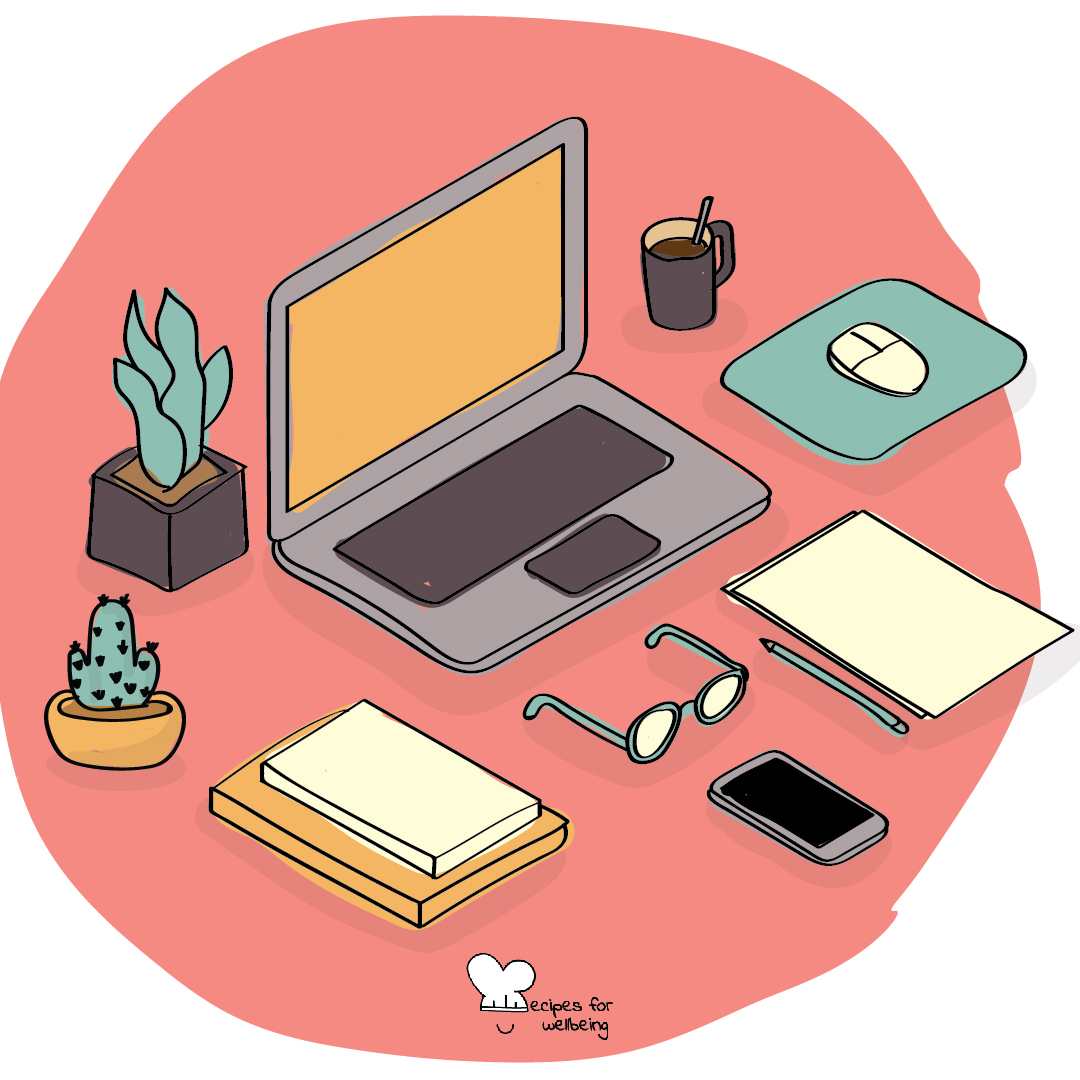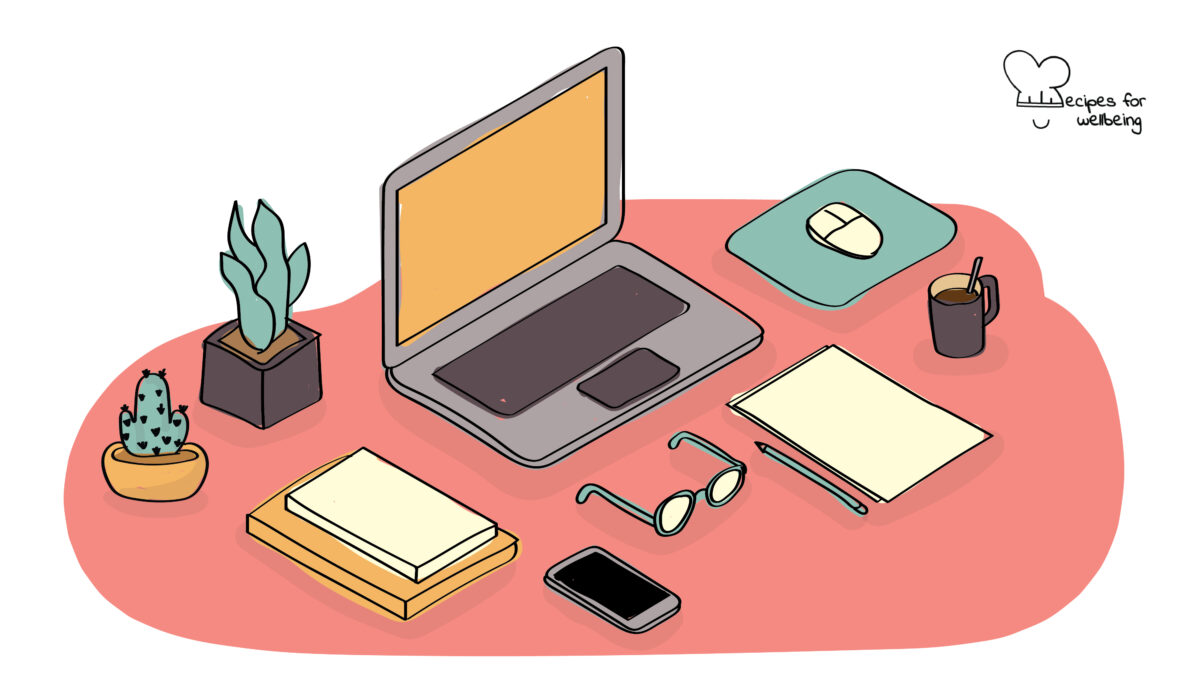
Create the optimal work setup in 5 steps
The key is not to prioritise what’s on your schedule but to schedule your priorities. ―Stephen R. Covey
👥 Serves: 1 person
🎚 Difficulty: Easy
⏳ Total time: 1 day
🥣 Ingredients: Plants, light bulbs, work equipment, motivation
🤓 Wholebeing Domains: Accomplishments, Discomfortability
💪 Wholebeing Skills: Accountability, Adaptability, Agency, Flexibility

Create the optimal work setup in 5 steps
📝 Description
Health and productivity considerations for remote workers.
Working from home has become more and more popular across the whole world. It provides many employee benefits, such as increased productivity and more freedom. Employers tend to benefit from this new structure as well. Fewer employees in the office mean more business cost savings. Research by the American Opportunity Survey showed that more than 50% of adults in the USA do some form of remote work as of 2022. Since the remote working trend is here to stay, employees should consider updating their home office for increased health and productivity.
Besides the many benefits offered to employees, remote work also has challenges. Without the proper structure, remote work negatively affects employees’ mental and emotional health. A lack of work-life boundaries and a dedicated room often causes this. A 2021 Journal of Occupational Environmental Medicine study showed that only 33% of remote workers have a dedicated space for their work, and half of those people share that room with someone else.
Employees can enhance their wellbeing and productivity with a few changes to their work environment. These changes can be as big or as small as you want.
This recipe has been kindly donated by Ismirelda Forst from InspectionSupport.com.
👣 Steps
Step 1 – Declutter your home office (2–24 hours)
A clutter-free workstation improves productivity. Whether you need a few hours or a whole day to declutter your home office, ensure it’s done correctly. Doing so is the first step in creating a healthy, productive home office.
Start by removing all items that no longer serve you. These can be old documents, stationary or work equipment. Next, invest in office storage cabinets and units to keep all your essential work items safe. Use binder clips and holders to keep your power cords and electrical cables organised.
Step 2 – Create a healthy work setup
Some of the most common areas for injuries in remote workers are the back, shoulders, and hands. The cause of these injuries is due to a lack of proper workstation setup.
Therefore, investing in ergonomic furniture is beneficial to avoid these strains. If you’re on a low budget, start investing in an ergonomic chair. As you’re ready to invest more in a good, healthy work set-up, look at noise-cancelling headphones, standing desks, and laptop stands.
Place your office as far from your bed as possible. Ideally, your work office and your bedroom will be separate. It has been proven that combining your workspace and sleeping space can cause sleeping issues.
Step 3 – Brighten up your office with colours
Add colours to your environment to go all in on creating the most effective work setup. Specific colours will help boost productivity and mood. For example, choose warm colours to increase productivity. Add blue to your room when your work requires you to be creative. When you need to make firm decisions, yellow has proven useful.
Like this, you can play around with colours and their meaning. Don’t be afraid to create a home office using different colours as long as you feel comfortable.
Step 4 – Lighten up your office
Proper lighting is vital to prevent eye strain and fatigue. Place your desk so that it isn’t directly under your lamps. Place it close to a window to take full advantage of natural lighting. Use lampshades and small light fixtures when natural lighting isn’t sufficient.
Next, place your lighting in front of you to avoid creating a glare on your screen. Use an adjustable desk lamp that produces a defined light source. This will result in lighting with little to no shadows cast by light fixtures. Adjusting your lighting correctly will positively affect your energy.
Extra tip: Add daylight LED bulbs to create maximum brightness for your workspace.
Step 5 – Lighten up your office
Brighten up your work environment by adding a few plants. Working around plants will create a healthy environment. A few benefits are mood enhancement, stress reduction, and a more cheerful environment. It has been proven that “green” offices make employees happier and more productive.

